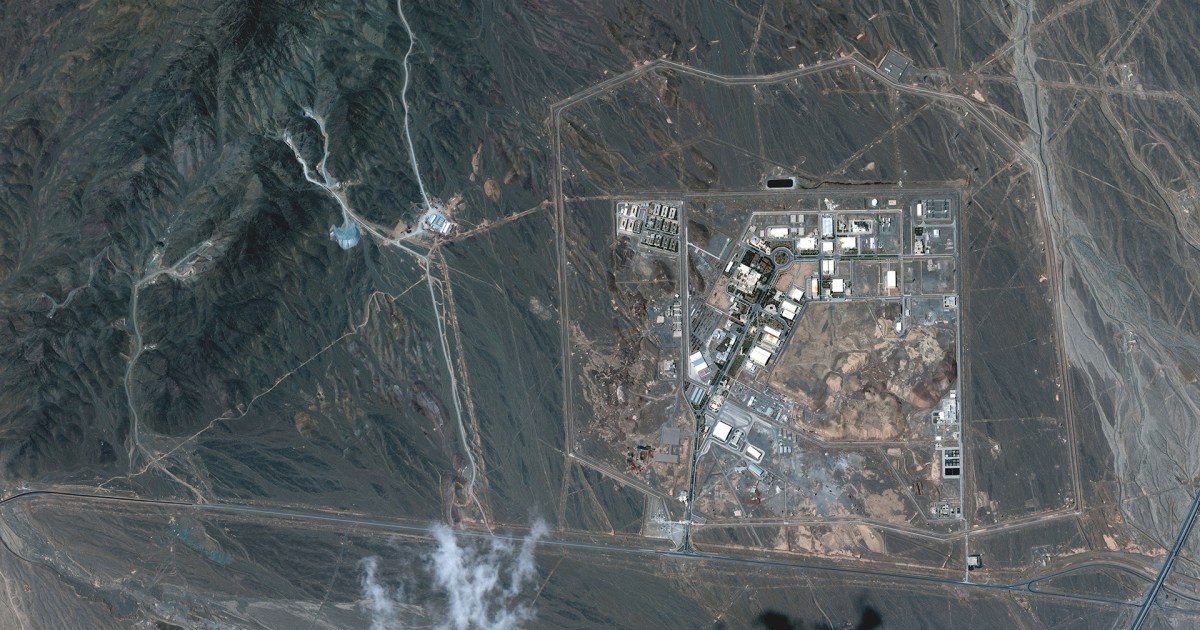Since former US President Donald Trump decided to withdraw his country from the Iran nuclear deal in May 2018 and re-imposed sanctions on Tehran, Iran has breached numerous restrictions that were prolonging the period it needed to produce enough fissile material to make an atomic bomb.
Diplomats say that this period will not return to the year, even if an agreement is reached during the ongoing negotiations to revive the Iranian nuclear agreement in the Austrian capital Vienna, in light of the experiences that Tehran gained from violating the restrictions of the agreement concluded in 2015.
However, a return to those restrictions will extend the period of Iran's accumulation of fissile material from what it is now.
On the other hand, Iran says that it wants to enrich uranium only for civilian uses, but many in the Western countries are skeptical about this, and say that it is working to keep its options open, by approaching the ability to produce nuclear weapons, and the Western powers say that time is running out for the possibility of reaching an agreement because Iran's nuclear program is making rapid progress, which could soon render the deal useless.
How close is Iran to being able to manufacture an atomic bomb?
And to what extent did it exceed the restrictions contained in the 2015 agreement?
collection period
Based on the latest quarterly report from the International Atomic Energy Agency on Iran's nuclear activities, published in November 2021, experts estimated the time needed to gather fissile material to be between 3 and 6 weeks, but they say it would take longer to turn it into a weapon. It is usually within two years.
And Israeli Finance Minister Avigdor Lieberman said last November that Iran could have nuclear weapons within five years.
The estimation of the compilation period is not scientifically accurate, and it is difficult to determine what the situation will be in an agreement whose details have not been completed or published. However, diplomats and analysts say that rough preliminary estimates estimate the compilation period to be about 6 months.
Fertilization period
The 2015 agreement limits the degree of purity to which Iran can enrich uranium to 3.67%, well below the 90% needed for a nuclear weapon, or the 20% Iran reached before the deal was reached.
Iran is now enriching uranium at various levels, the highest of which is about 60%.
The agreement also stipulates that Iran can only produce, store and enrich uranium using just over 5,000 first-generation less efficient centrifuges at a single facility, the underground fuel enrichment complex in the Natanz area (320 km south of The capital, Tehran.
The deal allows Iran to enrich uranium for research, without storing the enriched uranium, in limited numbers of advanced centrifuges that are generally at least twice as efficient as the first generation known as IR-1.
Iran is now enriching uranium with hundreds of advanced centrifuges inside the underground Natanz facility, and inside the experimental fuel enrichment unit above ground in the Natanz area as well.
It also enriches uranium using more than 1,000 IR-1 devices at the buried Fordow facility in Batn Jabal (90 km southwest of Tehran), and Tehran also uses more than 100 advanced centrifuges for enrichment at that facility as well.
uranium stockpile
In its report published last November, the International Atomic Energy Agency estimated that Iran’s stockpile of enriched uranium is just under 2.5 tons, 12 times more than the limit allowed in the Iranian nuclear deal set at 202.8 kilograms, but less than the amount it was storing Tehran before the conclusion of the agreement, which is more than 5 tons.
However, Iran is now enriching uranium at a rate higher than the 20% it reached before the agreement, and has about 17.7 kg of enriched uranium, at 60%, close to the purity needed to make a nuclear weapon, which is 90%.
It takes about 25 kilograms of enriched uranium to make one nuclear bomb.
Diplomats say that under the agreement that is being worked out, the uranium in excess of the permissible limit will be either diluted or shipped to Russia, while Iran returns to enriching uranium to a purity of only 3.67%.
Inspection and control
The agreement forced Iran to implement the so-called Additional Protocol of the International Atomic Energy Agency, which allows for snap inspections of undeclared nuclear sites.
The agreement also expanded the agency's surveillance work with cameras and other devices beyond the main activities and inspections covered by the old comprehensive safeguards agreement Iran signed with the agency.
Iran has stopped implementing the Additional Protocol, and only allows additional monitoring to continue through a black box arrangement, in which Iranian authorities collect and store images and data from cameras and other devices, but without the IAEA having access to them, at least for the time being.
This arrangement has been in effect for a year.
Weapon manufacture
Despite the ban under the deal, Iran has produced 20% enriched uranium, which irritates Western powers, because uranium production is an important step toward making bombs, and no country has done so without eventually developing nuclear weapons.
While Iran says it is working to produce fuel for nuclear reactors.

